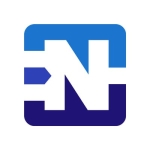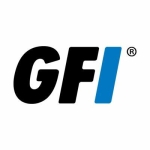What is our primary use case?
We use this product to secure our entire network, for ZTNA structure, and for VPN purposes, allowing access to our servers behind the firewall.
How has it helped my organization?
Using this product has increased our security and has given us much better results in terms of security scans.
Palo Alto embeds machine learning into the core of the firewall to provide online real-time attack prevention, and I would rate that capability an 8 out of 10. It's definitely effective in terms of securing our network against threats that are able to evolve and morph rapidly.
This solution provides a unified platform that natively integrates all of the security capabilities, although we are not using parts of it. For example, we don't use the configuration tools like Panorama.
What is most valuable?
The most valuable feature is the CLI.
We have the firewall configured for zero-day signatures, which is very important to us. We must be HIPAA and PCI compliant, which means that we need those signatures immediately.
There is no noticeable trade-off between security and network performance. In fact, so far, we've not seen any negative network performance with it. We're very impressed in that regard.
What needs improvement?
The web interface, especially when committing changes, remains a bit slower than I would like, but it has improved over the years. Reboots for the VM series do take longer than I would have expected.
For how long have I used the solution?
I have been working with the Palo Alto Networks VM-Series for almost 5 years.
What do I think about the stability of the solution?
This product is very stable. We have had zero problems with stability.
What do I think about the scalability of the solution?
The scalability is fantastic. We're using the lowest-end product right now, and I don't foresee when we'll have to upgrade. We have a long way where we can continue to scale up.
We currently have multiple people that use it for VPN purposes, to access our servers behind the firewall. It is not used nearly as extensively as it should be. However, in the future we will start flowing all of our internet traffic through it.
We're all working remotely, and we're going to be connecting through the firewall. This means that our traffic is going to greatly increase, meaning that our usage will also increase. We'll also be using many more of the features.
How are customer service and support?
The technical support from Palo Alto is good, overall. However, their response times could be a little quicker.
We have not really had any big complaints with the technical support and I would rate them a seven out of ten.
How would you rate customer service and support?
Which solution did I use previously and why did I switch?
Prior to using Palo Alto, we were using an on-premises solution by Juniper. When we switched from onsite to the cloud, we changed products.
We made the switch because Juniper became unbearable regarding complexity and performance. It was getting very bad; we couldn't manage it well, and the performance was quite poor.
How was the initial setup?
The initial setup can be quite complex. There is a steep learning curve and we failed at it a few times before we were able to put a production machine into place.
Our final deployment took between three and four hours.
What about the implementation team?
Our in-house team was responsible for the deployment.
What was our ROI?
We have absolutely seen a return on our investment. We are definitely more secure. With the features that are in Palo Alto, we do not have to worry about people busting into our network. Even just out of the box, with the base features, it's very solid. The default configurations are quite secure.
Our return on investment comes from the fact that no longer need to spend hours monitoring our network the way we did before. We've saved man hours and we've saved stress. I am unable put a monetary value to that, but that would be the return.
What's my experience with pricing, setup cost, and licensing?
This is not the cheapest firewall but it's not the most expensive of the options on the market.
The new licensing structure is a little difficult to understand at first, but with the right thought put into it, would like save some money.
Which other solutions did I evaluate?
Beyond Palo Alto, we evaluated two or three other products. Two of them that I can recall are Fortinet and the Microsoft Azure Firewall.
We did some extensive reviews and some extensive testing and what we found is that for the price, Palo Alto gave us the best options. It had the best set of security features. It wasn't the cheapest product but it was the best solution that fit our requirements.
What other advice do I have?
We have not yet implemented the DNS security features but we will in the future.
If one of my colleagues at another company were to say that they were just looking for the cheapest and fastest firewall, I would suggest that they be careful. Palo Alto has a great balance. It's not super expensive compared to other options on the market, and it's quite quick when it comes to throughput and performance.
In summary, this is a good product but I do suggest that people shop around a little bit.
I would rate this solution an eight out of ten.
Which deployment model are you using for this solution?
Public Cloud
If public cloud, private cloud, or hybrid cloud, which cloud provider do you use?
Disclosure: My company does not have a business relationship with this vendor other than being a customer.



















